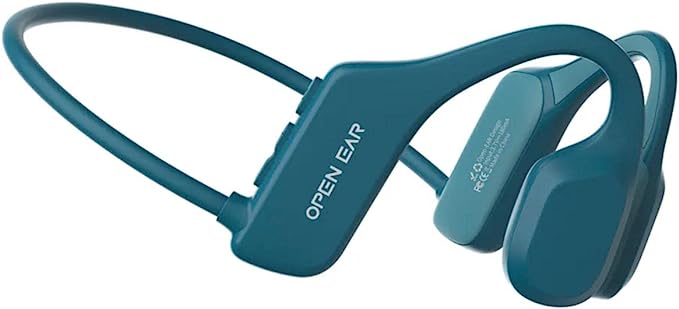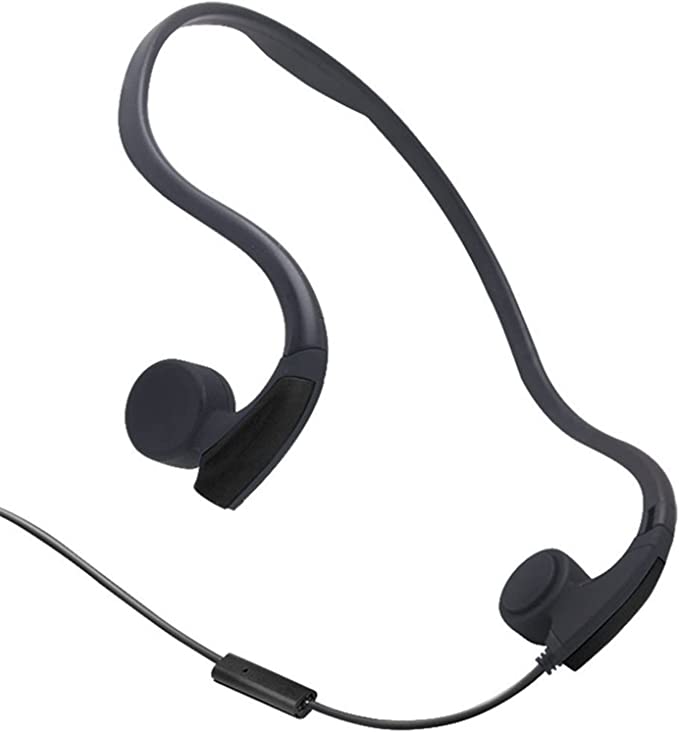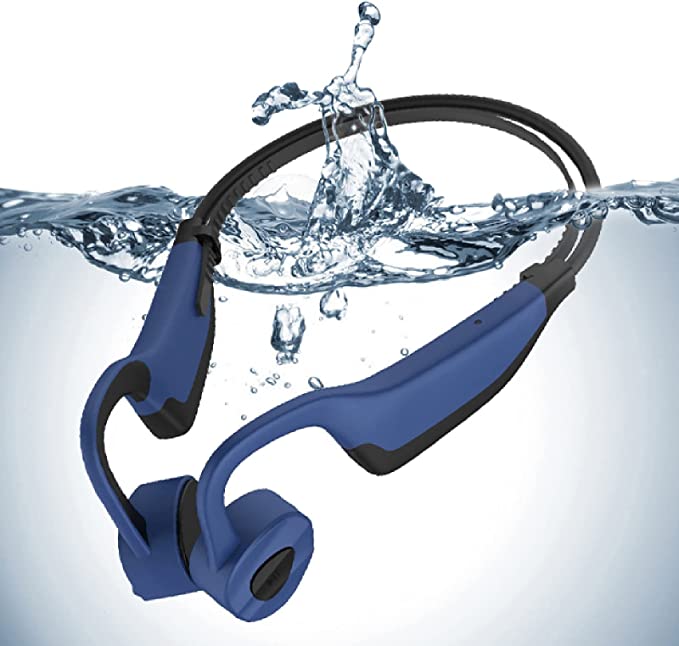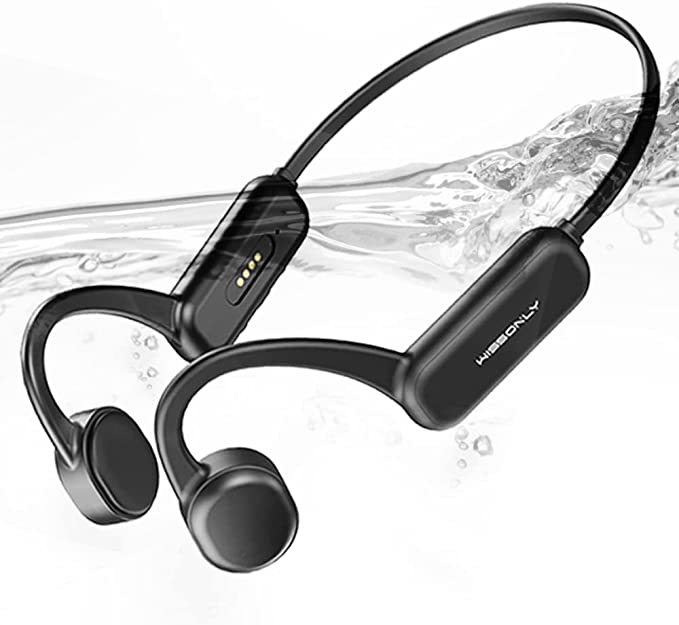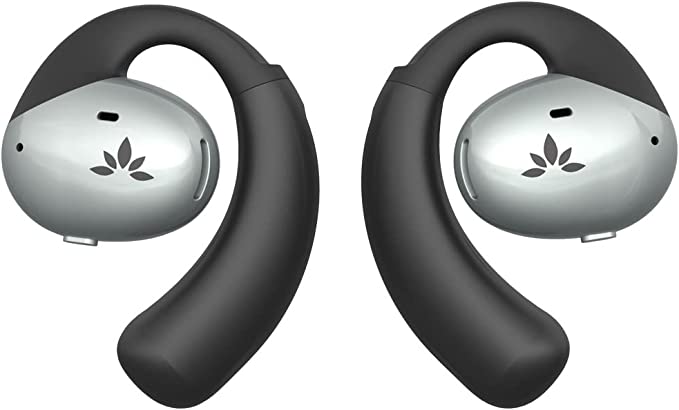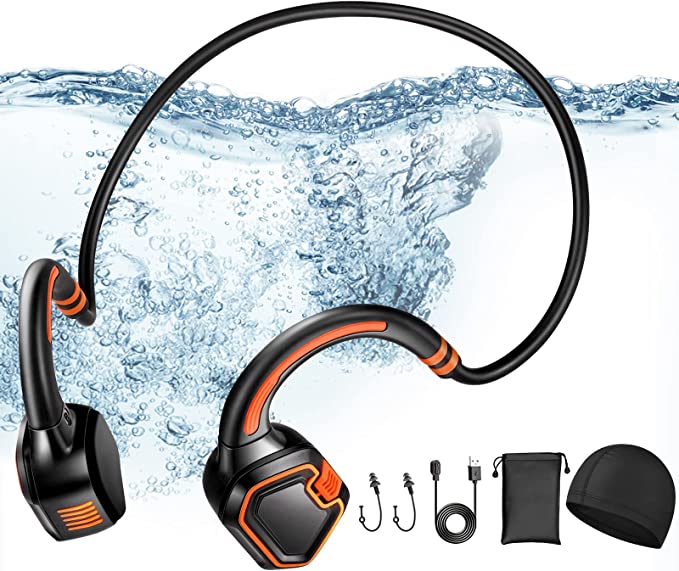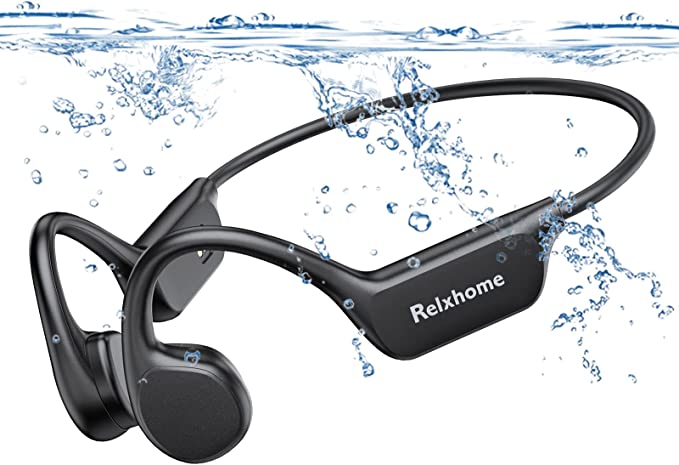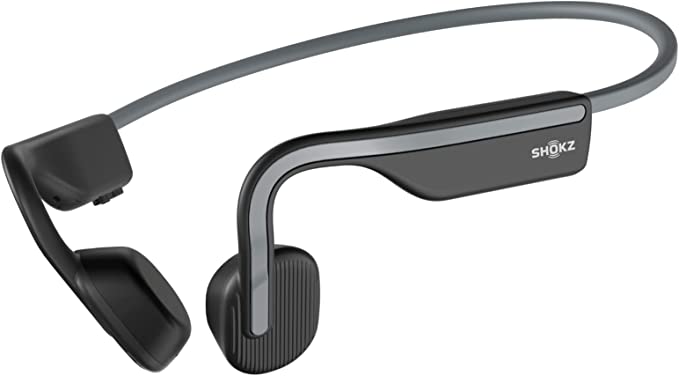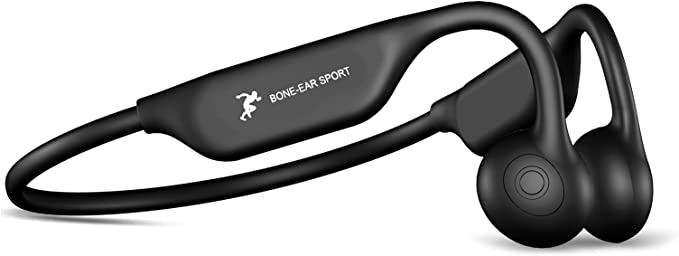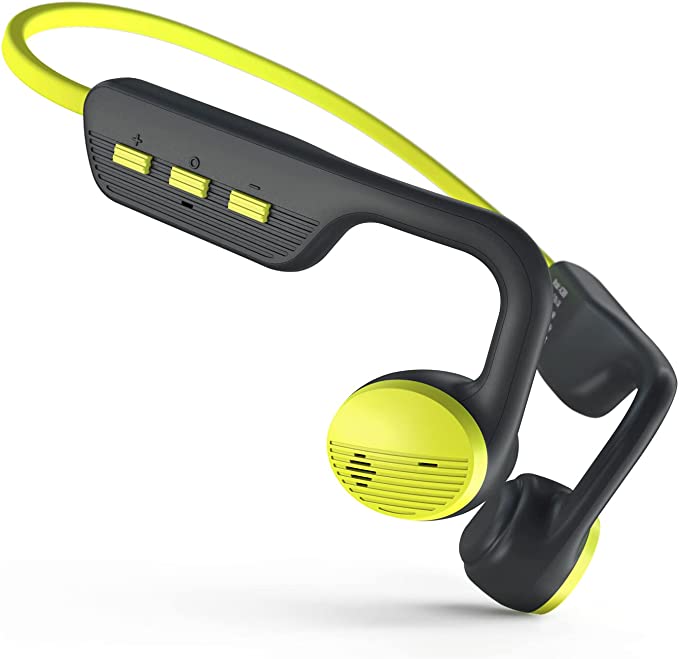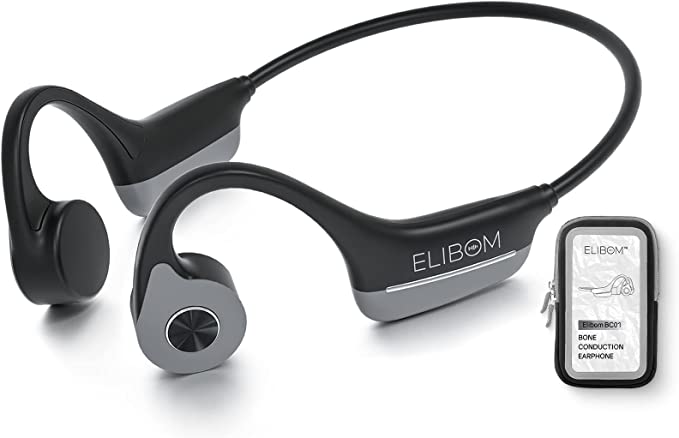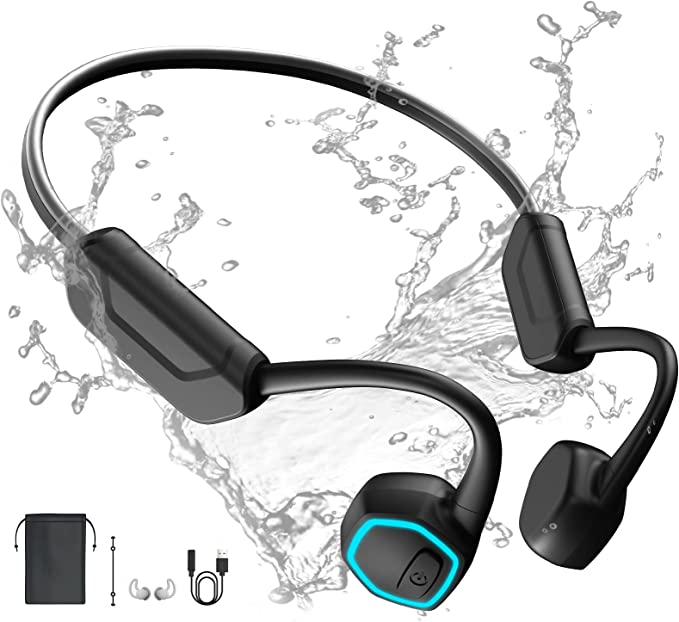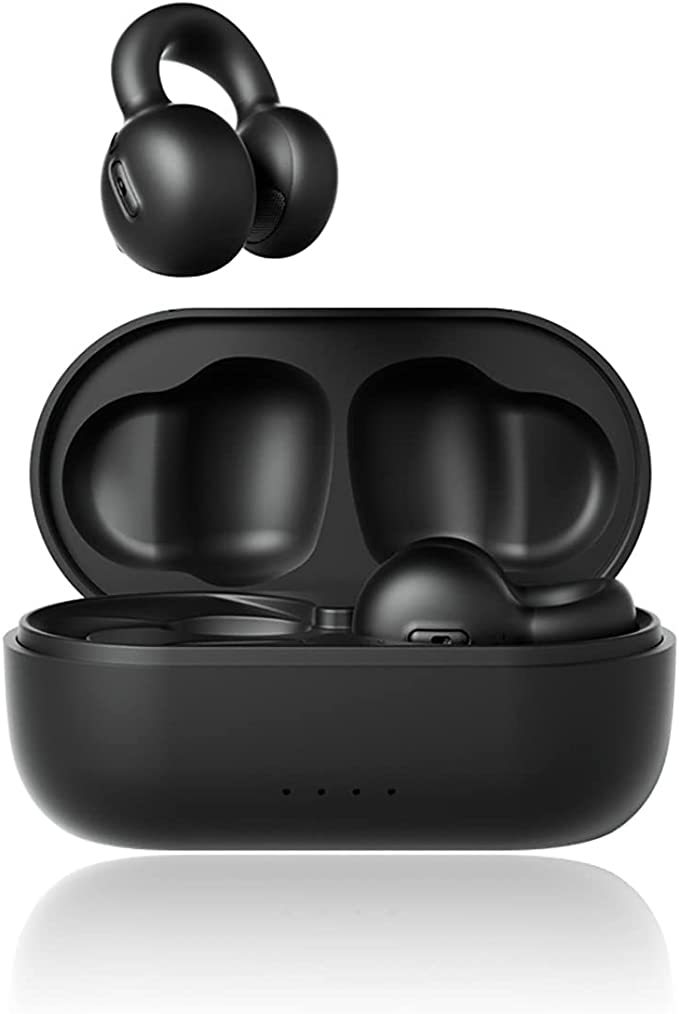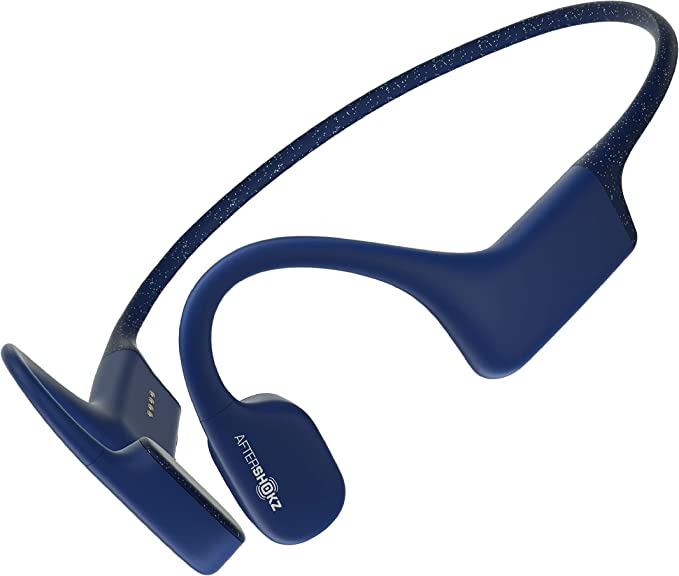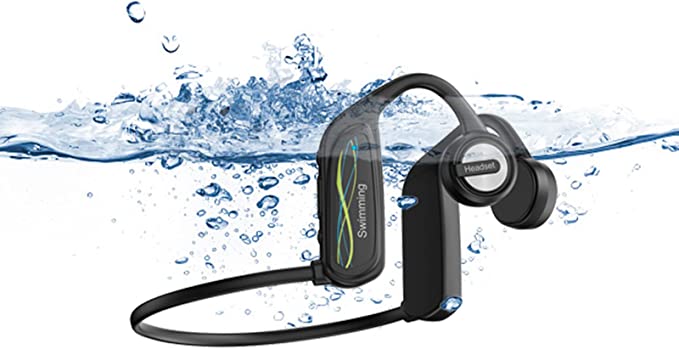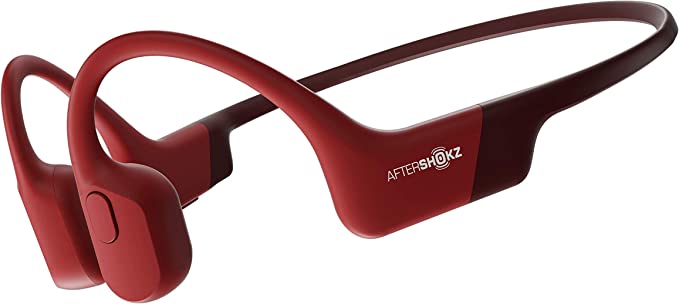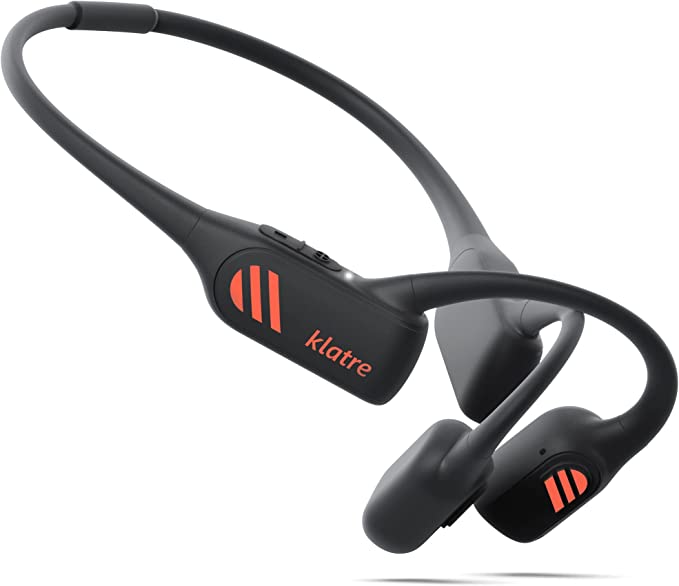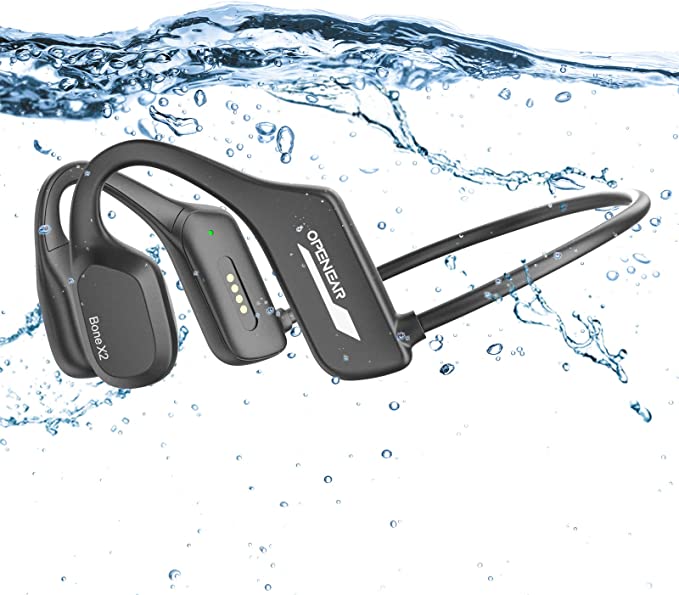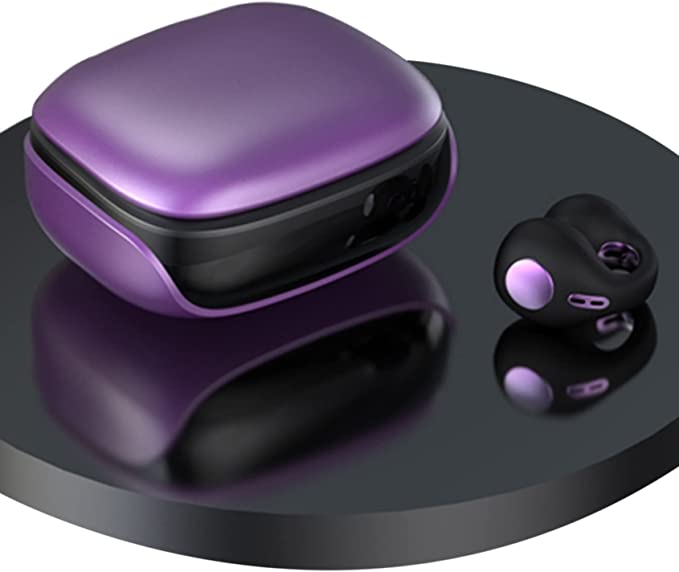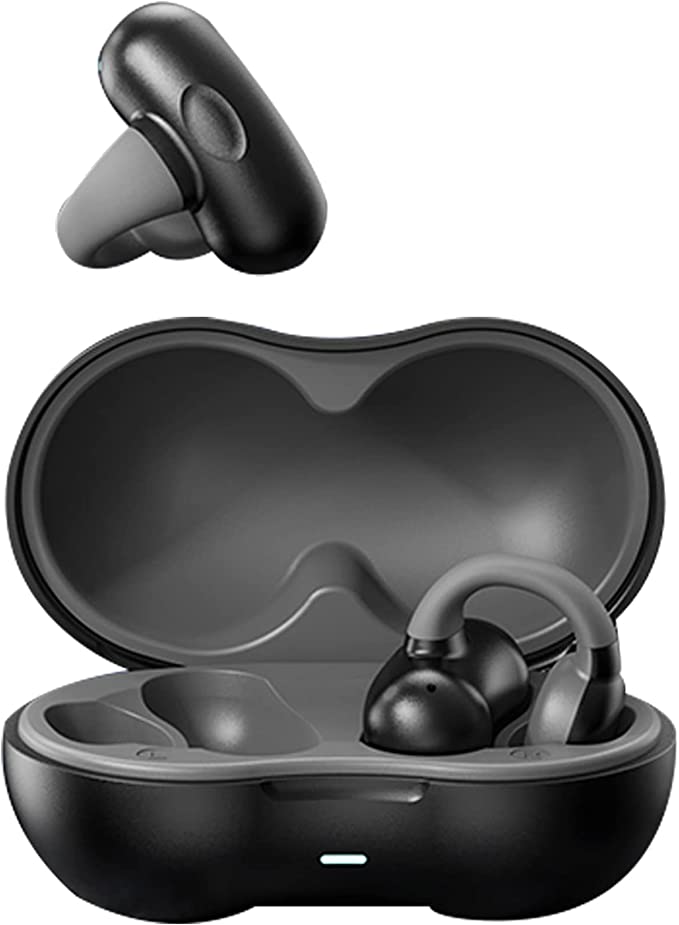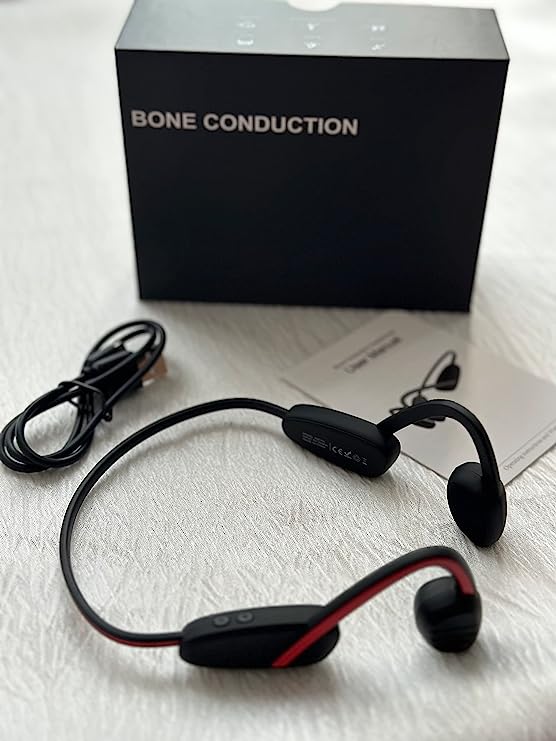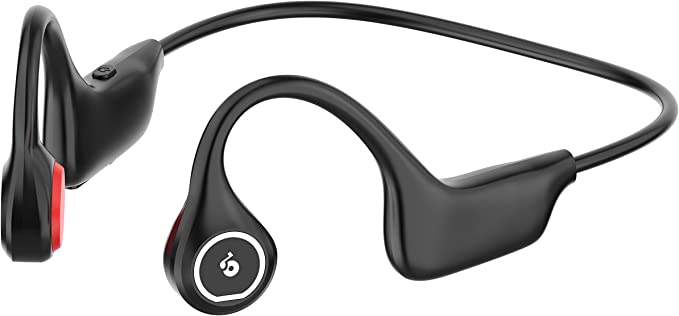Mosonnytee V18 Bone Conduction Headphones: Unpacking the Science of Open-Ear Audio & Wireless Sound
Update on May 14, 2025, 2:36 p.m.
We live immersed in a symphony of personal audio. Earbuds nestled deep, or plush cups enveloping our ears, have become extensions of ourselves, curating our auditory world. But this intimate bubble, while often welcome, can sometimes mean a disconnect from our immediate surroundings, or even physical discomfort after hours of use. What if there was a way to experience rich sound while keeping your ears open and receptive to the world? This isn’t a futuristic dream, but a fascinating reality made possible by bone conduction technology – a principle we’ll explore, using the Mosonnytee V18 headphones as our practical case study.

Journey into Sound: The Marvel of Bone Conduction
To truly appreciate bone conduction, let’s first consider how we typically hear. Most sound reaches us via air conduction. Sound waves, which are essentially vibrations traveling through the air, are funneled by our outer ear into the ear canal. They strike the eardrum, causing it to vibrate. These delicate vibrations are then amplified by three tiny bones in the middle ear (the ossicles – malleus, incus, and stapes) and transmitted to the cochlea, a spiral-shaped, fluid-filled organ in the inner ear. Within the cochlea, specialized hair cells convert these mechanical vibrations into electrical signals that our auditory nerve carries to the brain, which finally interprets them as recognizable sound. It’s an intricate and marvelous biological machine.
Bone conduction, however, offers an alternative pathway. Instead of traveling through the air in your ear canal, sound, in this instance, is transmitted as subtle vibrations directly through the bones of your skull – typically the cheekbones (zygomatic bones) or the temporal bones just in front of the ears. These vibrations bypass the eardrum and middle ear entirely, directly stimulating the cochlea in the inner ear.
This isn’t some brand-new, out-of-the-blue invention. The principle has historical echoes. Perhaps the most famous, albeit anecdotal, example is that of Ludwig van Beethoven. As the great composer progressively lost his hearing, he reportedly discovered he could still perceive the notes of his piano by clenching a metal rod between his teeth and touching the other end to the instrument’s soundboard. The vibrations traveled through the rod, his jawbone, and then to his inner ear. More concretely, bone conduction principles have long been utilized in specialized hearing aids for individuals with conductive hearing loss (where the outer or middle ear’s ability to transmit sound is impaired, but the inner ear functions normally). It has also seen applications in military communication systems, allowing soldiers to receive commands while keeping their ears open to battlefield sounds.
The Mosonnytee V18 claims its “open ear technology” leverages this very principle, aiming to “protect hearing while keeping the ear canal clean and fresh.” The primary, and perhaps most compelling, benefit of such an open-ear design is enhanced situational awareness. Imagine cycling through city traffic; with bone conduction, you could potentially listen to navigation cues or music while still clearly hearing approaching vehicles, horns, or other crucial ambient sounds. Similarly, in an office environment, you might listen to a podcast without being completely oblivious to a colleague addressing you. For individuals prone to ear infections or discomfort from in-ear devices, leaving the ear canal unobstructed can indeed be a welcome relief.
Now, a crucial note on sound fidelity. Because bone conduction bypasses the natural resonance and amplification characteristics of the ear canal and middle ear, the perceived sound quality can differ from traditional air conduction headphones. Often, users report that the bass frequencies might feel less impactful or “booming,” while mid and high frequencies can be very clear. The overall experience can also be influenced by how snugly the transducers rest against the bone and an individual’s unique skull density and structure. It’s a different listening experience, with its own set of sonic characteristics.

The Unseen Connection: Decoding Bluetooth 5.2
The magic of modern personal audio isn’t just about how sound reaches our ears, but also how it gets to the device in the first place – increasingly, without cumbersome wires. The Mosonnytee V18 reportedly relies on a “Bluetooth 5.2 smart low-power chip” for its wireless capabilities. Bluetooth, a ubiquitous short-range wireless technology standard, has undergone significant evolution since its inception, and version 5.2 brought several noteworthy enhancements pertinent to audio.
While the product description doesn’t detail the specific profiles or codecs used, Bluetooth 5.2, as a standard, lays the groundwork for features like LE Audio (Low Energy Audio). LE Audio itself introduces capabilities such as improved audio quality at lower data rates (thanks to codecs like LC3, though we don’t know if the V18 specifically implements it), better power efficiency, and enhanced support for true wireless stereo devices and broadcast audio.
For a user of a device like the V18, what does the promise of “Bluetooth 5.2” generally translate to? * Stability & Range: The V18 product information claims an “unobstructed connection within 33 feet (approximately 10 meters)” that is “smooth without jamming.” Bluetooth 5.2, in general, offers improvements in connection stability and range over older versions. It can better navigate crowded radio frequency environments and maintain more consistent data throughput, which is vital for an uninterrupted audio stream. Features within the broader Bluetooth 5.x specifications aim to reduce interference and dropouts. * Power Savvy: The “low-power” descriptor is key. Bluetooth 5.2 is designed with energy efficiency in mind, particularly for LE (Low Energy) operations. This is crucial for battery-operated devices like wireless headphones. The Mosonnytee V18 is stated to offer 8 hours of listening time from a 1.5-hour charge. Efficient power management by the Bluetooth chip contributes significantly to achieving such battery life, allowing users to get through a typical workday or several workout sessions without constantly reaching for the charger. * Call Clarity: The V18 also promises “clearer calls.” While call quality depends on multiple factors including the microphone quality and ambient noise processing, Bluetooth 5.2’s general improvements in handling audio data packets and maintaining stable connections can certainly contribute to a more reliable voice transmission experience compared to older Bluetooth iterations.
Essentially, a modern Bluetooth chip acts as a sophisticated, invisible messenger, diligently working to deliver your audio reliably and efficiently from your phone or other source device to your ears.

Built for Life’s Adventures: Durability and Design Thinking
Beyond the core sound engine and wireless link, the physical attributes of a personal audio device heavily influence its practicality and pleasure of use. The Mosonnytee V18 appears to consider several aspects of daily life in its design.
Let’s first address its resilience to the elements. The V18 boasts an IPX5 waterproof rating. To understand this, we need to briefly demystify the IP (Ingress Protection) Code, which is an international standard (IEC 60529). The first digit (represented by ‘X’ here) relates to protection against solid particle ingress (like dust); an ‘X’ means either there’s no data available for this protection level, or it’s not rated for dust protection. The second digit, ‘5’ in this case, refers to protection against liquid ingress. Specifically, an IPX5 rating means the enclosure is protected against low-pressure water jets projected by a nozzle (6.3 mm) from any direction for at least 3 minutes, at a water volume of 12.5 liters per minute from a distance of 3 meters.
What does this mean in the real world? It signifies that the headphones should comfortably withstand sweat during an intense workout or getting caught in a light to moderate rain shower. As the product description suggests, this makes it a potentially “good helper for sports after work.” However, it’s crucial to note that IPX5 does not mean the device is fully waterproof for submersion – so no swimming with these.
Comfort, especially during extended wear or vigorous activity, is another vital consideration. The Mosonnytee V18 is claimed to weigh a mere 0.04 pounds (which is just under 18 grams). From an ergonomic perspective, such a lightweight design can significantly reduce strain on the ears and head, potentially making it comfortable for hours of continuous use. Adding to this, the earpiece area is described as being 180-degree rotatable. This seemingly small detail can be quite significant for achieving a secure and comfortable fit on either the left or right ear, accommodating different head shapes and user preferences.
Finally, let’s consider control. The V18 is described as having a “single physical key” to manage all operations. The design philosophy behind a single-button interface often prioritizes simplicity and aims to prevent accidental presses that can occur with touch-sensitive controls, especially during activities like running. However, this approach typically means the user needs to learn a series of short presses, long presses, or multiple presses to control various functions like play/pause, track skip, volume adjustment, and call management. While it can be streamlined once mastered, there might be an initial learning curve, and some users might find it less intuitive than dedicated buttons for distinct functions. It’s a trade-off between minimalist design and operational complexity.

The Cone of Silence? Navigating Sound Leakage & Privacy
One common question that arises with open-ear audio solutions, including bone conduction headphones, is about sound leakage: can people nearby hear what you’re listening to? This is a valid concern for privacy, especially when taking calls or listening to audio in quieter environments like an office or public transport.
To understand this, it helps to know that any device producing sound can potentially “leak” it. With traditional earbuds, sound is channeled directly into the ear canal. With over-ear headphones, well-designed earcups aim to create a seal around the ear. Bone conduction, by its very nature of using vibrations, operates differently. The transducers vibrate against your bones, and these vibrations are primarily conducted through your skull to your inner ear.
However, these vibrations aren’t perfectly contained. Some vibrational energy can also cause the casing of the headphones themselves to vibrate, and this, in turn, can vibrate the surrounding air, creating audible sound waves that someone very close to you might perceive, especially at higher listening volumes or in very quiet settings. The Mosonnytee V18 product description claims that its “high-performance bone conduction vibrator returns in the body, reducing the sound leakage,” and that this helps “protect your privacy” so that “call content will not be transferred to the outside world.”
From a scientific standpoint, well-engineered bone conduction headphones do tend to have less sound leakage compared to, for instance, traditional open-back on-ear headphones, simply because less sound is being directly projected into the open air. The design challenge lies in maximizing the vibrational energy transfer to the user’s bones while minimizing the residual vibrations that escape into the surrounding environment. Factors such as how snugly the transducers fit against the skin, the volume level, the acoustic properties of the headphone materials, and even the ambient noise level will influence how perceptible any leaked sound might be. Achieving absolutely “no leakage” is an extremely difficult, if not impossible, feat for any wearable audio device at significant volumes. Therefore, it’s more realistic to think of it in terms of “minimized” or “significantly reduced” sound leakage rather than complete silence to the outside world.
Synthesizing the Experience: The V18 in a Wider Context
When we look at the Mosonnytee V18, it’s not just about individual technologies in isolation. It’s about how bone conduction for open-ear awareness, Bluetooth 5.2 for wireless stability, and practical design features like IPX5 water resistance and a lightweight build potentially converge to create a distinct user experience. Imagine a runner who wants to enjoy a motivational playlist but also needs to hear an approaching bicycle bell or a car. Or consider a remote worker who needs to be on calls frequently but also wants to remain aware of their home environment. This is where the amalgamation of such features aims to deliver its value.
The personal audio landscape is continuously evolving. We’re seeing a significant trend towards solutions that offer not just high-quality sound, but also greater integration into our lives – promoting awareness when needed, ensuring comfort for all-day wear, and providing seamless connectivity. Technologies like bone conduction represent one fascinating path in this evolution, catering to users who prioritize an open-ear experience for safety, comfort, or specific hearing needs.
As an audiology researcher, I find the emphasis on open-ear designs particularly interesting from a hearing wellness perspective. While no headphone type is inherently “safe” if used irresponsibly at excessive volumes for prolonged periods, designs that don’t occlude the ear canal can reduce the risk of ear infections for some individuals and, by allowing ambient sound to be heard naturally, might encourage users to listen at more moderate volumes. This awareness is, in itself, a valuable aspect.

Concluding Notes: Listening to the Future
The journey through the science behind a device like the Mosonnytee V18 reveals a tapestry woven from acoustics, wireless engineering, material science, and human-centered design. Bone conduction offers a unique auditory pathway, Bluetooth 5.2 provides the invisible threads of connection, and features like IPX5 ratings and ergonomic design aim to make the technology wearable and resilient in our daily lives.
Understanding the “how” and “why” behind these features empowers us as users. It allows us to move beyond marketing claims and appreciate both the potential and the inherent characteristics of different technologies. The quest for the perfect personal audio experience is ongoing, and with each innovation, we get a little closer to solutions that are more attuned not just to our entertainment needs, but to our overall well-being and our connection with the vibrant, sounding world around us. Keep listening, keep questioning, and keep exploring the ever-evolving symphony of sound technology.
